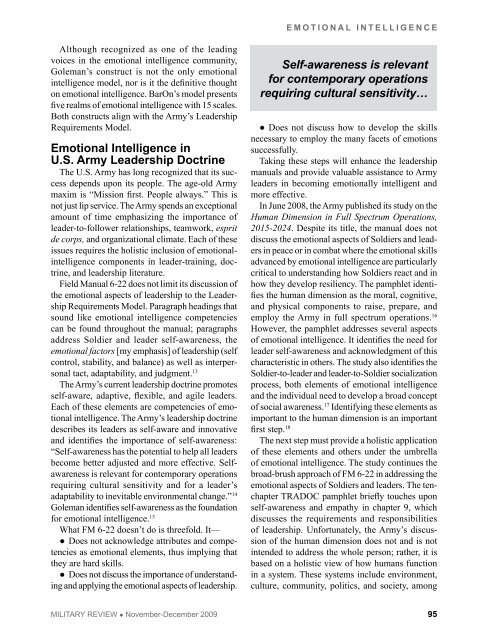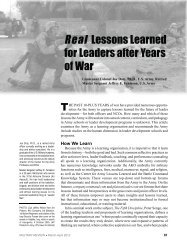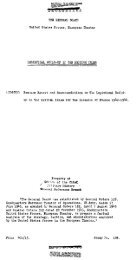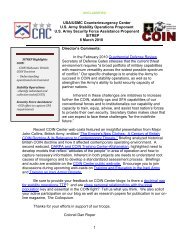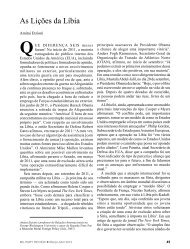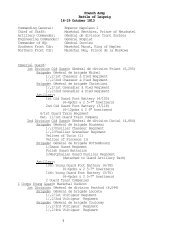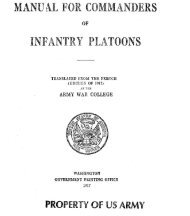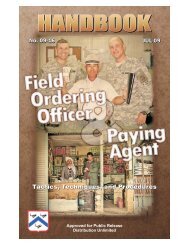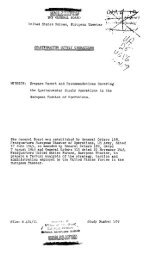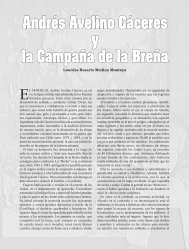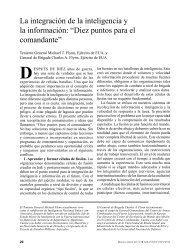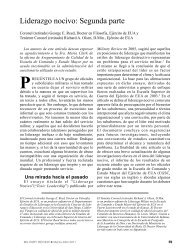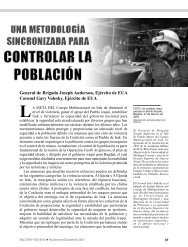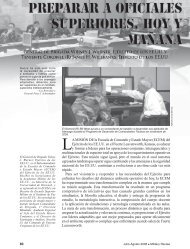Army Leadership Defined - Combined Arms Center - U.S. Army
Army Leadership Defined - Combined Arms Center - U.S. Army
Army Leadership Defined - Combined Arms Center - U.S. Army
You also want an ePaper? Increase the reach of your titles
YUMPU automatically turns print PDFs into web optimized ePapers that Google loves.
Although recognized as one of the leading<br />
voices in the emotional intelligence community,<br />
Goleman’s construct is not the only emotional<br />
intelligence model, nor is it the definitive thought<br />
on emotional intelligence. BarOn’s model presents<br />
five realms of emotional intelligence with 15 scales.<br />
Both constructs align with the <strong>Army</strong>’s <strong>Leadership</strong><br />
Requirements Model.<br />
Emotional Intelligence in<br />
U.S. <strong>Army</strong> <strong>Leadership</strong> Doctrine<br />
The U.S. <strong>Army</strong> has long recognized that its success<br />
depends upon its people. The age-old <strong>Army</strong><br />
maxim is “Mission first. People always.” This is<br />
not just lip service. The <strong>Army</strong> spends an exceptional<br />
amount of time emphasizing the importance of<br />
leader-to-follower relationships, teamwork, esprit<br />
de corps, and organizational climate. Each of these<br />
issues requires the holistic inclusion of emotionalintelligence<br />
components in leader-training, doctrine,<br />
and leadership literature.<br />
Field Manual 6-22 does not limit its discussion of<br />
the emotional aspects of leadership to the <strong>Leadership</strong><br />
Requirements Model. Paragraph headings that<br />
sound like emotional intelligence competencies<br />
can be found throughout the manual; paragraphs<br />
address Soldier and leader self-awareness, the<br />
emotional factors [my emphasis] of leadership (self<br />
control, stability, and balance) as well as interpersonal<br />
tact, adaptability, and judgment. 13<br />
The <strong>Army</strong>’s current leadership doctrine promotes<br />
self-aware, adaptive, flexible, and agile leaders.<br />
Each of these elements are competencies of emotional<br />
intelligence. The <strong>Army</strong>’s leadership doctrine<br />
describes its leaders as self-aware and innovative<br />
and identifies the importance of self-awareness:<br />
“Self-awareness has the potential to help all leaders<br />
become better adjusted and more effective. Selfawareness<br />
is relevant for contemporary operations<br />
requiring cultural sensitivity and for a leader’s<br />
adaptability to inevitable environmental change.” 14<br />
Goleman identifies self-awareness as the foundation<br />
for emotional intelligence. 15<br />
What FM 6-22 doesn’t do is threefold. It—<br />
● Does not acknowledge attributes and competencies<br />
as emotional elements, thus implying that<br />
they are hard skills.<br />
● Does not discuss the importance of understanding<br />
and applying the emotional aspects of leadership.<br />
MILITARY REVIEW November-December 2009<br />
E M O T I O N A L I N T E L L I G E N C E<br />
Self-awareness is relevant<br />
for contemporary operations<br />
requiring cultural sensitivity…<br />
● Does not discuss how to develop the skills<br />
necessary to employ the many facets of emotions<br />
successfully.<br />
Taking these steps will enhance the leadership<br />
manuals and provide valuable assistance to <strong>Army</strong><br />
leaders in becoming emotionally intelligent and<br />
more effective.<br />
In June 2008, the <strong>Army</strong> published its study on the<br />
Human Dimension in Full Spectrum Operations,<br />
2015-2024. Despite its title, the manual does not<br />
discuss the emotional aspects of Soldiers and leaders<br />
in peace or in combat where the emotional skills<br />
advanced by emotional intelligence are particularly<br />
critical to understanding how Soldiers react and in<br />
how they develop resiliency. The pamphlet identifies<br />
the human dimension as the moral, cognitive,<br />
and physical components to raise, prepare, and<br />
employ the <strong>Army</strong> in full spectrum operations. 16<br />
However, the pamphlet addresses several aspects<br />
of emotional intelligence. It identifies the need for<br />
leader self-awareness and acknowledgment of this<br />
characteristic in others. The study also identifies the<br />
Soldier-to-leader and leader-to-Soldier socialization<br />
process, both elements of emotional intelligence<br />
and the individual need to develop a broad concept<br />
of social awareness. 17 Identifying these elements as<br />
important to the human dimension is an important<br />
first step. 18<br />
The next step must provide a holistic application<br />
of these elements and others under the umbrella<br />
of emotional intelligence. The study continues the<br />
broad-brush approach of FM 6-22 in addressing the<br />
emotional aspects of Soldiers and leaders. The tenchapter<br />
TRADOC pamphlet briefly touches upon<br />
self-awareness and empathy in chapter 9, which<br />
discusses the requirements and responsibilities<br />
of leadership. Unfortunately, the <strong>Army</strong>’s discussion<br />
of the human dimension does not and is not<br />
intended to address the whole person; rather, it is<br />
based on a holistic view of how humans function<br />
in a system. These systems include environment,<br />
culture, community, politics, and society, among<br />
95


